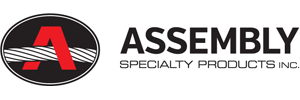OSHA Guide – Cranes and Derricks in Construction
MENU
- Introduction
- Employer Responsibilities
- Section 1400 – Scope
- Section 1401 – Definitions
- Section 1402 – Ground Conditions
- Sections 1403-1406 – Assembly and Disassembly
- Sections 1407-1411 – Power Lines
- Section 1412 – Inspections (with Section 1435(f)-Tower Crane Inspections) and Section 1436(p)-Derricks Inspections)
- Section 1413 – Wire Rope Inspection
- Section 1414 – Wire Rope – Selection and Installation Criteria
- Sections 1415 Safety Devices & 1416 Operational Aids
- Section 1417 – Operation
- Section 1418 – Authority to Stop Operation
- Section 1419-1422 – Signals
- Section 1423 – Fall Protection
- Section 1424 – Work Area Control
- Section 1425 – Keeping Clear of the Load
- Section 1426 – Free Fall and Controlled Load Lowering
- Section 1427 – Operator Qualification and Certification
- Section 1428 – Signal Person Qualifications
- Section 1429 – Qualifications of Maintenance & Repair Employees
- Section 1430 – Training
- Section 1431 – Hoisting Personnel
- Section 1432 – Multiple-Crane/Derrick Lifts
- Section 1433 – Design, Construction and Testing
- Section 1434 – Equipment Modifications
- Section 1435 – Tower Cranes
- Section 1436 – Derricks
- Section 1437 – Floating Cranes/Derricks and Land Cranes/Derricks on Barges
- Section 1438 – Overhead & Gantry Cranes
- Section 1439 – Dedicated Pile Drivers
- Section 1440 – Sideboom Cranes
- Section 1441 – Equipment with a Rated Hoisting/Lifting Capacity of 2,000 Pounds or Less
- Directory of States with Approved Occupational Safety and Health Programs
- Workers’ Rights
- OSHA Assistance, Services and Programs
- OSHA Regional Offices
- NIOSH Health Hazard Evaluation Program
Section 1425 – Keeping Clear of the Load
This section seeks to protect employees against being struck by a moving or falling load.
Safe Hoisting Routes
Where available, hoisting routes that minimize the exposure of employees to hoisted loads must be used, to the extent consistent with public safety.
Stationary Suspended Loads
While the operator is not moving a suspended load, no employee may be within the fall zone, except for employees:
- Engaged in hooking, unhooking, or guiding the load;
- Engaged in the initial attachment of the load to a component or structure; or
- Operating a concrete hopper or concrete bucket
Hooking, Unhooking or Guiding the Load
When employees in the fall zone are engaged in hooking, unhooking, or guiding the load, or are connecting a load to a component or structure, all of the following criteria must be met:
- The materials being hoisted must be rigged to prevent unintentional displacement
- Hooks with self-closing latches or their equivalent must be used. Exception: “J” hooks may be used for setting wooden trusses so that a worker need not go onto the truss to open the hook
- The materials must be rigged by a qualified rigger
Tilt-Up or Tilt-Down Operation
During a tilt-up or tilt-down operation:
- No employee may be directly under the load
- Only employees essential to the operation are permitted in the fall zone (but not directly under the load). Such employees include those who must be in the fall zone to guide the load, monitor the load’s movement, or attach and/or detach the load

